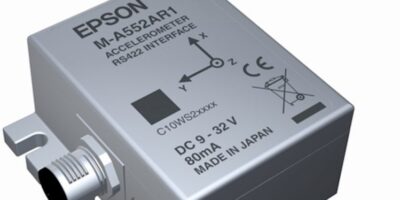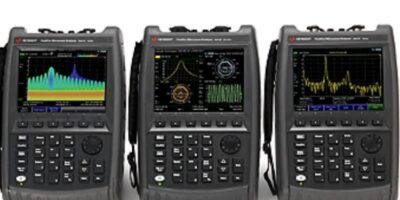Accelerometers added to the Seiko Epson (Epson) portfolio can monitor the health of the wearer or buildings and infrastructure, as the company releases the M-A352 and the M-A552xxx accelerometers.
The M-A352 accelerometer is designed for infrastructure health monitoring. It provides the necessary noise performance of one micrG/√Hz or better (servo accelerometer class) for a stable supply and cost competitiveness, says Epson.
The M-A552AC1 and M-A552AR1 three-axis accelerometers boast the same performance as the M-A352 but are equipped with the controlled area network (CAN) and RS-422 interfaces, respectively. These interfaces are widely used in industrial applications. The M-A552AC1 and M-A552AR1 are housed in metal packages that provide IP67-equivalent protection against water and dust.
This level of protection against the elements enables the accelerometers to be used in a range of industrial applications that require long distances, stability and reliability, says Epson.
The accelerometers make it easy for developers to build multi-node (multi-point) measurement systems, synchronised measurement systems and other complex, sophisticated measurement systems. They are easy to install, connect, and use even outdoors and under other harsh environmental conditions, adds Epson, and can reduce customer system development times.
Samples of the new products will begin shipping in the summer of 2019, with volume production scheduled for the spring of 2020.
The MA-A552AC1 (CAN) and MA-A552AR1 (RS-422) accelerometers can be used in structure health monitoring to monitor buildings, bridges, tunnels, and steel towers for earthquake detection, environmental vibration measurement and industrial equipment monitoring. They can also be used in unmanned vehicles (e.g., terrestrial vehicles, undersea probes), and for the measurement of the vibration and path of industrial equipment and vehicles.
Epson Europe Electronics is a marketing, engineering and sales company and the European headquarters for electronic devices of Seiko Epson, Japan. Headquartered in Munich, Germany, since 1989, Epson Europe Electronics has 50 employees, European sales representatives and a Europe-wide network of distributors. Epson Europe Electronics provides value added services for semiconductors, sensors, sensing systems and timing devices for a variety of markets, including industrial, automotive, medical, and communications.







